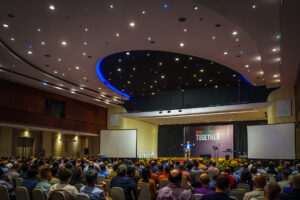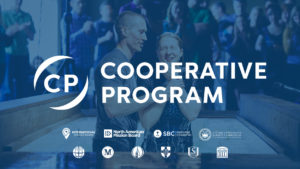
COLUMBUS, Ohio (BP) — Plant 100 new Filipino churches in North America during the next five years.
That’s a key component of the evangelistic strategy to be presented at the Filipino Southern Baptist Fellowship of North America’s annual meeting June 15-16 in conjunction with the annual meeting of the Southern Baptist Convention in Columbus, Ohio.
The group will gather for a dinner fellowship Monday, June 15, at a local church to be announced. A basketball game pitting pastors against laymen will follow. The annual meeting Tuesday, June 16, will begin at 2:30 p.m. in Elijah Pierce Rooms A-B at the Hilton Columbus Downtown.
Speakers at the meeting will include Ken Weathersby, the SBC Executive Committee’s vice president for convention advancement, and Jeremy Sin, a North American Mission Board national church planting catalyst working among Asian people groups.
“We’re having a hard time keeping up with the growth of Filipinos coming over to the USA and Canada in terms of churches that would intentionally reach them,” fellowship president Peter Yanes said. “We haven’t produced that many indigenous workers for the past years, and we’re just starting to realize that now as we little by little develop our own people and prepare them to reach out.”
Of the approximately 4 million Filipinos in North America, Yanes estimates that fewer than 50,000 are evangelical Christians. That’s just over 1 percent.
One strategy for increasing the number of Filipino church leaders is to “import” them from the Philippines, said Yanes, who serves as a North American Mission Board church planting catalyst and ethnic strategist for the Baptist Convention of Pennsylvania/South Jersey. The Filipino Fellowship hopes to partner with U.S. churches that will sponsor church planters and pastors who emigrate from the Philippines.
The cultural transition to North America often is smooth for Filipino immigrants, Yanes said, because the Philippines are highly westernized, with English used for education and business. Filipinos have long communicated with one another in English to overcome the language barrier between various subgroups who speak different dialects of the Tagalog language.
In addition to sponsoring “imported” church leaders, the Filipino Fellowship has seen an increasing number of second-generation Filipinos serving as pastors and church planters.
“When the second generation [of Filipino immigrants] goes to seminary or Bible college here, most of the time they end up working with established American churches and not necessarily Filipino-American ones,” Yanes said. “Right now, for the past two or three years, we’re seeing new church plants by the second generation — those who were born here and grew up here. We’re excited about that.”
The Filipino Fellowship’s vision is to harness the leadership of first- and second-generation immigrants to plant 20 churches per year in the U.S. and Canada for the next five years. Known as the “2020 Vision,” the strategy aims to increase the total number of North American Filipino churches to more than 300 by the year 2020.
The 2020 Vision will be detailed in the final report of Executive Committee President Frank S. Page’s Asian American Advisory Council, of which Yanes is a member. The report is expected to be submitted by late May.
“The theme of what we’re going to do on June 16 is unfolding this five-year strategic approach and how we can serve and reach our own people in North America,” Yanes said.
To register for the annual meeting, email Yanes at [email protected]. The fellowship has a Facebook page and will post updates on the June gathering as the date approaches.
















